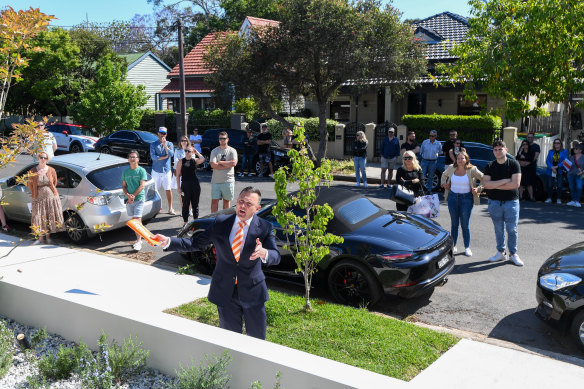How the gap between the property haves and have-nots just got wider
By Sue Williams
Property sellers’ profits have soared over the past decade, creating windfall gains for home owners who can use the proceeds to downsize, upsize, or help their family buy a home.
But the growth is widening the gap for home-buying hopefuls who do not have access to equity or parental help to get into the market themselves, with this societal division becoming a “critical” problem.

Property profits have soared in recent years.Credit: Peter Rae
Sydneysiders who sold a house in 2024 made a median profit of $655,000, Domain figures show, double the median profit of 2015 sellers at $326,250.
Melburnians made a median profit of almost $400,000 if they sold a house this year, a jump from $260,000 in 2015.
Brisbane’s profit this year of $395,000 is almost triple that the 2014 figure of $144,000, while Perth’s vendors’ bonanza was less, as a 2024 sale made them $231,000 as against 2015’s $165,000.
The stellar gains are the result of two different factors both pushing prices in the same direction, says Domain chief of research and economics Dr Nicola Powell.
“We’re seeing people staying in their homes for longer, so the amount of profit they make can be dependent on how long they’re there, and how many property cycles have gone by,” she said. “And, also, we’ve seen some extraordinary rates of price growth nationally since 2022, making a twofold impact on profit.
“But obviously, this does create a widening gap between the haves and have-nots. That amount of profit in each city shows how property can be used to build wealth for home owners and their families, while others are left behind.”
The research also shows that apartment sellers banked gains, but at nowhere near the same rate of growth, and sometimes for less profit than before.
That’s mostly the result of Australians’ enduring preference for houses on a block of land and the rise in the value of land as a result of that greater demand and the limited supply, Powell believes.
“The land component has the most value, and that’s what rises over time,” she said. “But for those hoping to make the step on the ladder from unit ownership to houses, it makes it more difficult still.”
Home owners are now using the profit they’ve made in the value of their homes to fund their own moves or give money to their children or grandchildren to help them afford a property.
This only widens the chasm, however, between those who own and are able to buy, and those stuck in the tight rental market.
“This is one of the biggest, and most critical, social problems facing Australia today,” said Peter Tulip, chief economist for the Centre For Independent Studies. “The central cultural aspiration in Australia has always been to work hard, save a bit of money and buy a house, but that’s increasingly unrealistic and unattainable for growing numbers of people, particularly those in their 20s and 30s.
“It’s no longer possible, and it’ll take decades before they can make enough money, with property prices rising much, much more quickly than either wages or the CPI.”
Meanwhile, those with property, following a period of relative interest rate stability, are moving to shore up their positions, which could serve to further widen the gap.
Angus Gilfillan, the CEO and co-founder of mortgage brokers Finspo, says the industry is seeing increased market activity from clients with strong equity positions.
“Some of the key strategies they are adopting include leveraging equity for investment properties, with lending for new investment properties surging,” he said. “In June 2024, 38 per cent of total property purchases were made by investors, the highest since April 2017.
“Many home owners are also using their equity to assist their children to enter the property market and, in our company, we’ve noticed an uptick in family guarantee loans as a result.”
While the rates of price growth are showing some signs of weakening, this gap will need more initiatives from government to help more into the market, and a dramatic rise in housing supply. That would include a surge in the ‘missing middle’ of affordable townhouses, terraces and medium-density development, Powell said.
Yet Tulip believes this is a tough problem to solve. “This is one of the top subjects for politicians, and they’ve come up with proposals of varying degrees of plausibility to deal with it,” he said.
“The biggest problem is that there’s a conflict between helping younger people into homes and preserving price growth for their parents and grandparents sitting on goldmines. It’s a conflict between the present and the future, and would the Baby Boomers on goldmines accept lower rates of capital gains to help the younger generations?”